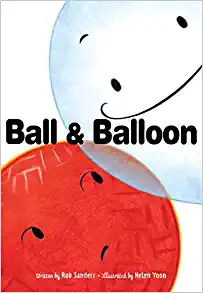MOWMT Day #10: Jill Dana Explores the Possibilities
Unlimited Possibilities: The World of Anthropomorphized Objects
By Jill Dana
In the children’s book world, when readers think anthropomorphized characters, we often think animals. Let’s dive into a world of unlimited possibilities where anything could be a character: the world of anthropomorphized objects.

When anthropomorphizing objects, it’s important to remember that the main character is usually a stand-in for the young reader. BUTTERNUT (Marshall Cavendish International, 2022) is the first book in a series about Butternut, a butternut squash main character. The illustrator Rachel Tan-Hwee and I both asked ourselves: how old is Butternut? We both envisioned Butternut as a young squash: a “child” squash instead of an “adult” squash. This helped establish their supermarket environment as a world with younger and older foods. (Not old in terms of expiration, but in a more human sense.) For example: “We can’t read,” said the baby [food] jars. “We’ll take you to someone who can.”
When writing anthropomorphic characters and reading mentor texts, ask questions like: What would a young (in this case) squash know? What wouldn’t “he” know? Where is he from? This often requires research that may or may not make it into the final manuscript. Researching squash farming, produce varieties, and food histories all add depth to the characters. There’s always a balance of picking and choosing the more “realistic” characteristics, the whimsical, the humorous, and more. Much of the essence of our food characters is inspired by the foods’ “names”. Wordplay and misinterpretation of words is an essential part of the BUTTERNUT supermarket world.

When reading mentor texts, like BALL & BALLOON (Margaret K. McElderry Books, 2019) it’s interesting to decipher where authors and illustrators draw the line between the object’s world and the human world. How much of the story relates to a human perspective? Are the wants and needs intrinsic to the type of object? Or is the object a metaphor? Or both?
In BALL & BALLOON, Author Rob Sanders and Illustrator Helen Yoon open the story with the sentence “Gravity had Ball down” and an illustration of a sad red ball. This opening immediately pulls the reader into this specific world and introduces the character’s conflict which feels intrinsic to the red ball character who compares itself to a balloon character.
In the imaginary world: Are humans part of the character’s world? Does the character understand humans or vice-versa? Which objects do and don’t understand each other? Set your own rules for the world and stick to the rules throughout the story. For example, in the supermarket world of BUTTERNUT, foods, produce, and plants can speak and understand each other, but they can’t communicate with anyone or anything outside that realm.

In PENGUIN & PINECONE: A FRIENDSHIP STORY (Bloomsbury, 2012), Author/Illustrator Salina Yoon skillfully anthropomorphized Pinecone in subtle ways that emphasize Pinecone’s differences from Penguin; how Pinecone does and doesn’t fit in Penguin’s world; and draws sympathy from Penguin. Pinecone makes sounds such as “brrr!” and “achooo!” This deceptively simple characterization contributes to a poignant story that sticks with the reader.

STICK AND STONE (by Beth Ferry and Tom Lichtenfeld, Clarion Books, 2015) is another friendship story with a Pinecone character but this Pinecone has a completely different personality and characterization from Salina Yoon’s Pinecone. When reading mentor texts, compare and contrast ways the “same” object is expressed as different characters. Stick, Stone, and Pinecone are consistent within their fictionalized world. Their conflicts are less intrinsic to the type of objects they are in the natural world. Rather, the conflicts relate to human adages (and idioms) and the deeper meanings within those adages, such as bullying and standing up for a friend. They tastefully interweave fun humor as well.
Remember that there are no set rules. You are the one creating the rules of the world. An object can be the opposite of what you think the object would be. An object can be a metaphor or symbol that is unrelated to its presumed place in the world. Let your imagination run free, but remember to be consistent within the world that you create. When reading mentor texts, ask: What works in this story? What doesn’t work? What took me out of the story? An inconsistency of the world? A goal/want/need that didn’t fit the essence of the character?
Have fun! With anthropomorphism the world really is your oyster. In fact, an oyster may be your main character or how about the pearl inside an oyster? Allow your imagination to run free.

Jill Dana is an author, illustrator, award-winning filmmaker, and certified elementary educator. She has a Master of Fine Arts in Television and Film Production and a Master of Education in Elementary Education plus TESOL. Her newest book BUTTERNUT (2022), about a little butternut squash lost in a supermarket, is the first in a Butternut series. Jill is a RYS Judge. She is a member of SCBWI, the Author’s Guild and the picture book groups @PBSunrays and @KidLitCarousel.
Visit Jill on Facebook, Twitter, Instagram, and TikTok: @JillDanaBooks
and her website www.JillDanaBooks.com
Jill’s Prize is a written picture book critique.
NOTE: As you comment on each post, please note whether you have shared this post, bought the book for yourself or as a gift, whether you have followed our guest blogger or Rate Your Story on social media (and where), as well as whether you have left a review of the guest blogger's book (and where) for extra entries (for each show of support) and to be eligible for surprise prizes.
Feel free to click the links to buy the books mentioned and help support our Weekly Mentor Text Talks. You can join our group here for more information:




















